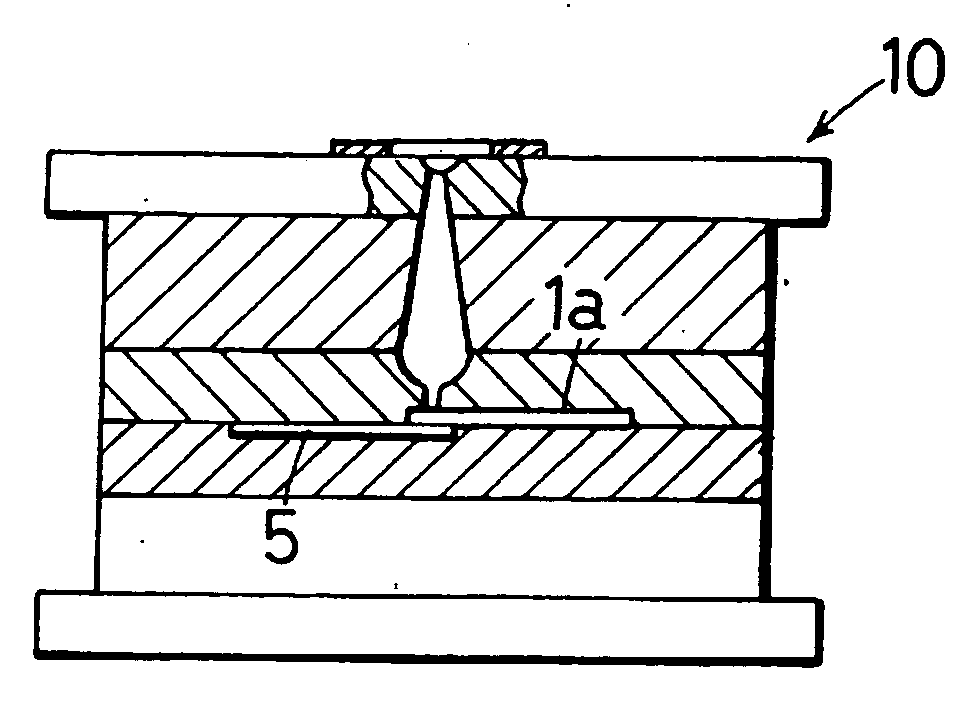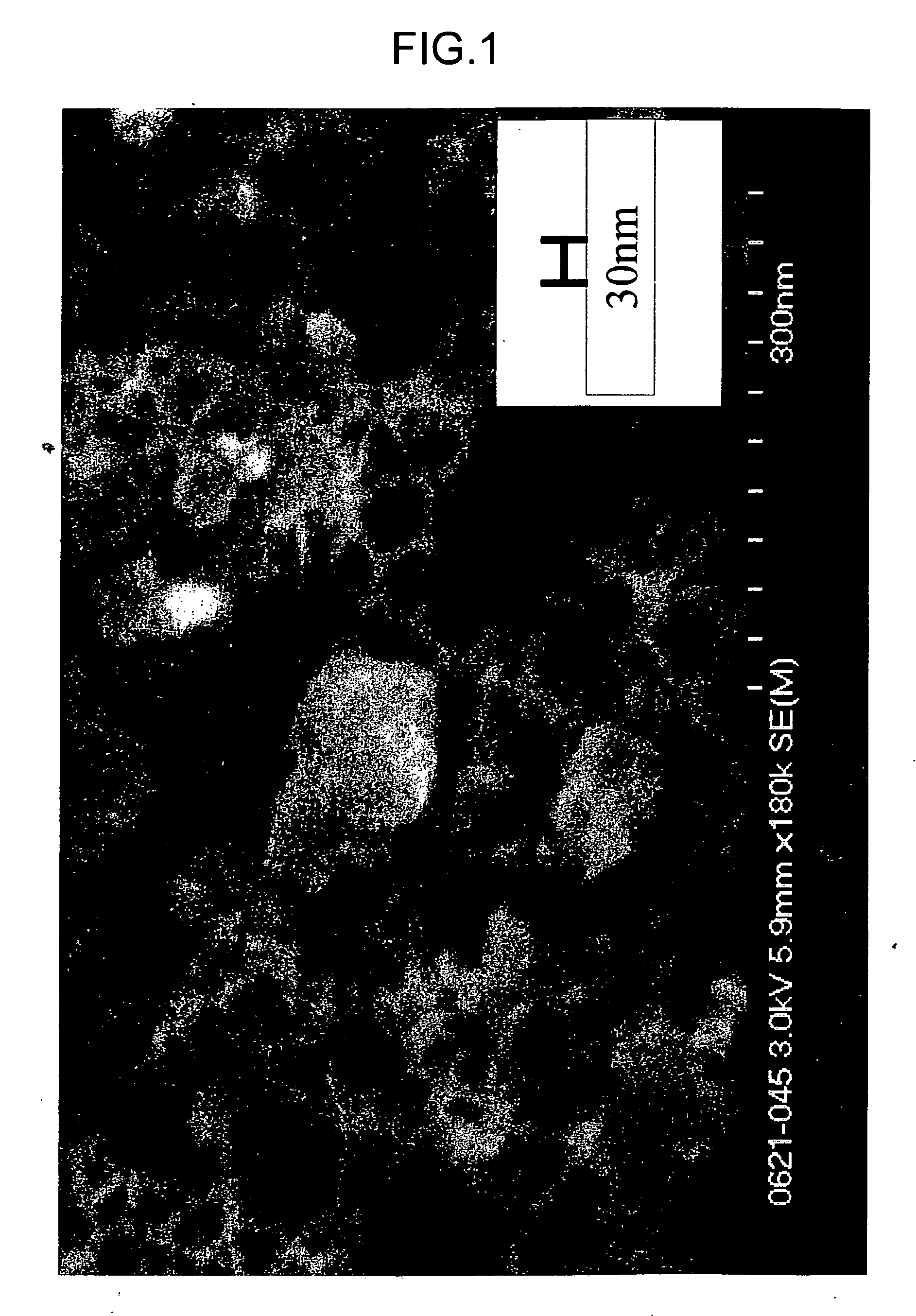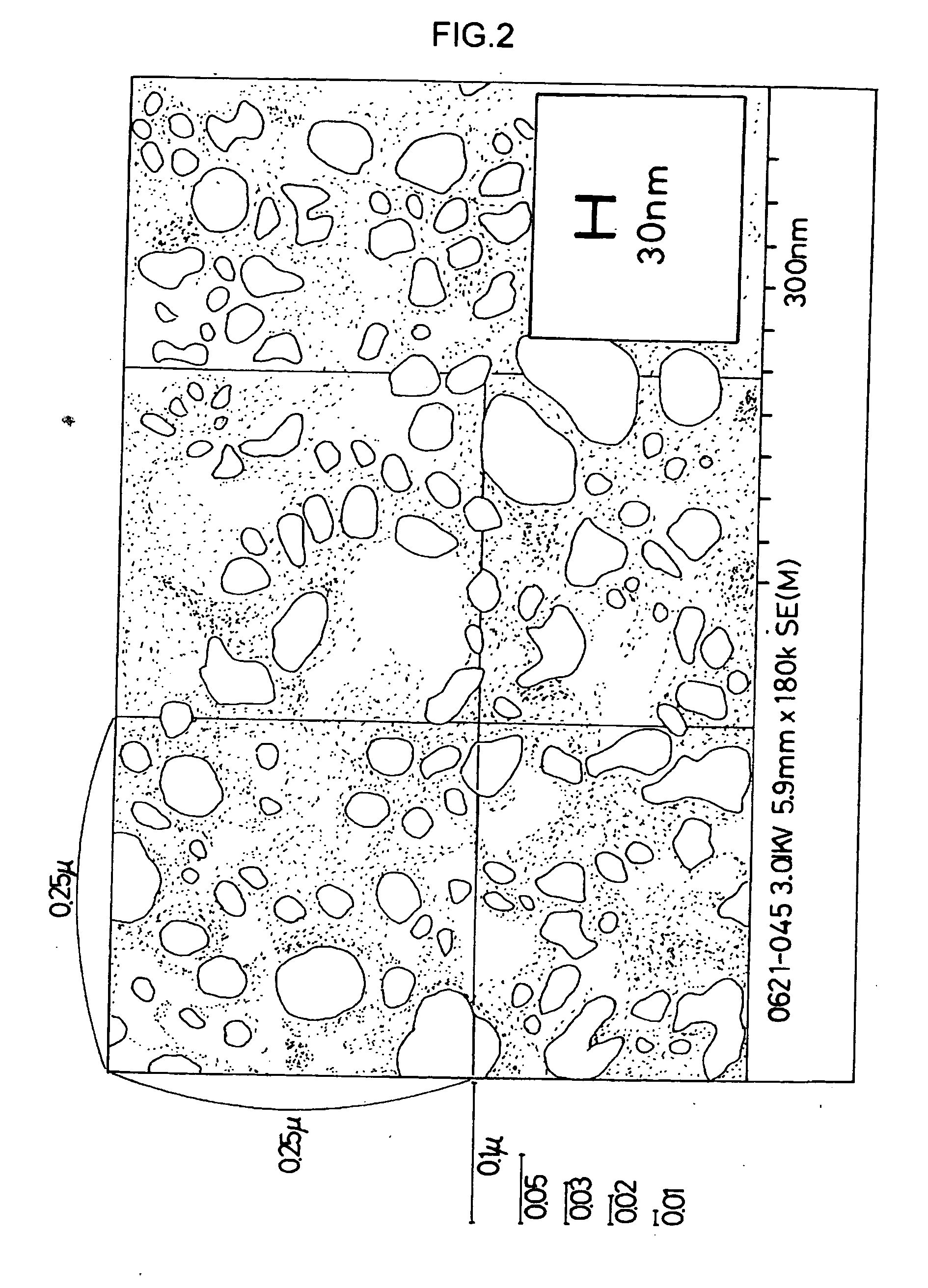Composite of aluminum alloy and resin composition and process for producing the same
a technology of resin composition and composite, which is applied in the field of composite of aluminum alloy and resin composition, can solve the problems of difficult development of adhesives, unsatisfactory conventional techniques, and little consideration of matching, and achieve the effect of mass productivity
- Summary
- Abstract
- Description
- Claims
- Application Information
AI Technical Summary
Benefits of technology
Problems solved by technology
Method used
Image
Examples
experimental example 1
[0068] A commercially available aluminum alloy plate A5052 / H38 with a thickness of 1 mm was purchased. The aluminum alloy plate was cut into a rectangular piece of 100 mm by 25 mm. The aluminum alloy piece was dipped in 1 liter of ethanol for 10 minutes under application of ultrasonic waves, and then dipped in 4 liters of tap water under stirring. Thereafter, the aluminum alloy piece was put into a plastic basket and washed with running tap water. Next, the aluminum alloy piece was dipped in a 2% aqueous caustic soda solution for 2 minutes, followed by rinsing with ion-exchange water. Then, the aluminum alloy piece was dipped in a 1% aqueous hydrochloric acid solution for 1 minute to effect neutralization. Then, the aluminum alloy piece was dip-washed in 4 liters of ion-exchange water, followed by rinsing with running ion-exchange water.
[0069] One liter of a 2% aqueous ammonia solution was prepared. A 1% aqueous caustic soda solution prepared separately was dropped into the aqueous...
experimental example 2
[0072] A thermoplastic resin composition was prepared by a twin-screw extruder and a pelletizer. The thermoplastic resin composition consisted essentially of 60% a polymer alloy containing 80% PBT and 20% PET, 20% glass fiber, and 20% glass powder filler. A rectangular molded article of 100 mm by 25 mm having a thickness of 3 mm was obtained by injection molding from a rectangular end. The coefficients of linear expansion in the lengthwise and crosswise directions were measured in the temperature range of from 0° C. to 60° C. The average coefficient of linear expansion in the lengthwise direction was 2.1 to 2.3×10−5° C.−1. The average coefficient of linear expansion in the crosswise direction was 3.7 to 3.9×10−5° C.−1. The average of the coefficients of linear expansion in the lengthwise and crosswise directions was 3.0×10−5° C.−1.
experimental example 3
[0073] Injection molding was carried out by using as a raw material the thermoplastic resin composition pellets prepared in Experimental Example 2, thereby obtaining a plate-shaped resin molded article 1 as shown in FIG. 3. As shown in FIG. 4, the resin molded article 1 and an aluminum alloy piece 2 were bonded together with an adhesive to obtain a test piece 3. Prior to the bonding process, a portion of the resin molded article 1 to be bonded was polished on a flat iron plate with calcium carbonate of 25 μm in average diameter and a small amount of water.
[0074] The resin molded article 1 was further polished with calcium carbonate of 5 μm in average diameter and a small amount of water and thoroughly washed with tap water under application of ultrasonic waves. After being placed in an air blast dryer at 50° C. for 6 hours, the resin molded article 1 was stored in a desiccator for drying filled with concentrated sulfuric acid. The aluminum alloy piece 2 obtained in Experimental Exa...
PUM
| Property | Measurement | Unit |
|---|---|---|
| Temperature | aaaaa | aaaaa |
| Temperature | aaaaa | aaaaa |
| Length | aaaaa | aaaaa |
Abstract
Description
Claims
Application Information
 Login to View More
Login to View More - R&D
- Intellectual Property
- Life Sciences
- Materials
- Tech Scout
- Unparalleled Data Quality
- Higher Quality Content
- 60% Fewer Hallucinations
Browse by: Latest US Patents, China's latest patents, Technical Efficacy Thesaurus, Application Domain, Technology Topic, Popular Technical Reports.
© 2025 PatSnap. All rights reserved.Legal|Privacy policy|Modern Slavery Act Transparency Statement|Sitemap|About US| Contact US: help@patsnap.com



